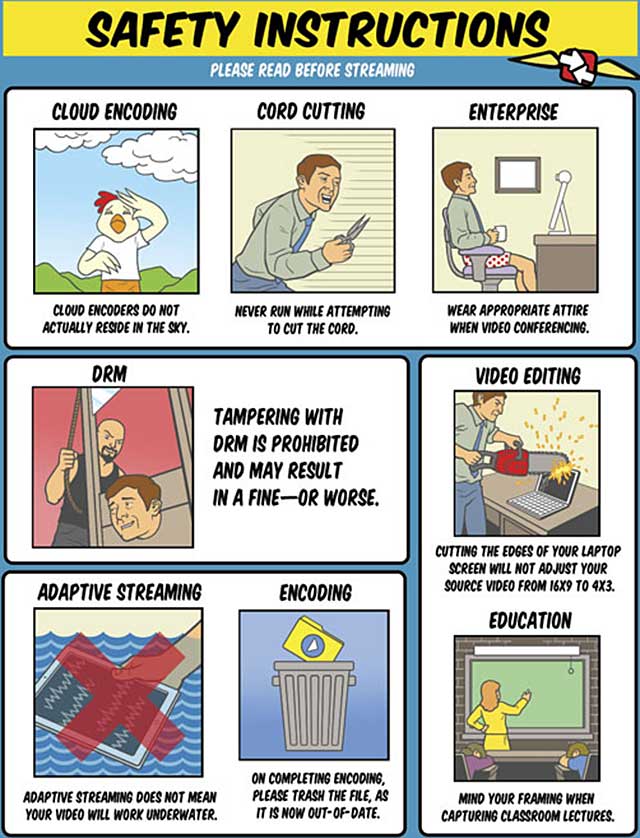Safety Instructions: Please Read Before Streaming
One thing I can say about our industry is that we've never had a fear of flying. As for adequately fueling the jet, checking all systems, and making sure all the pilots are sober, well...
In any case, it's always been exciting -- passionate, if you will. There's just so much talent in this industry that innovation and fresh ideas are never in short supply. That's why it moves so fast and it's so hard to keep up. To extend the metaphor, flights are getting shorter while the number of airlines and destinations are increasing. Sure, there are plenty of choices, and from afar, those choices don't look that different. I mean, after almost 20 years, this online video thing is now a cinch, right? So how is it possible for a company like Apple to have a live webcast fail for even a portion of its viewers, as the iPad mini launch webcast did in October 2012?
Does it bother you when someone outside the industry says something like, "What's so hard about online video?" I struggle with how to answer that one calmly, yet provide an answer in a context that's meaningful to that person without getting an expression that usually means one of two things: "Oh boy, why did I ask that?" or "You lost me at ‘adaptive.'" I think Orson Welles said it best: "There are only two emotions on a plane: boredom and terror." (I'd argue there's a third: anger.) But, like you, whose livelihood (or at least a good part of it) depends on understanding all this stuff, I know that that there's, well, a lot to know! That isn't going to change.
2013 is looking like the year of live webcasting. In addition to so many solid products and services emerging to facilitate this, I'll go as far as saying we are going to see a massive adoption of online video for new markets, especially public, private, and corporate security, spurred by recent tragic events. Live webcasting is exploding amid complexities and choices. Those of you in the cockpit are going to be responsible for making sure it delivers.
I recently went fishing on a few social media threads and groups devoted to online video, including our own, with the question, "What's the first rule of live webcasting?" While I chuckled when I saw, "You don't talk about live webcasting," there was tremendous response, boiling down to one common theme: Test, test, and then test some more.
Here are a few tips to start with:
- Know your audience -- how many will watch, and on what device(s).
- Use redundant gear and services -- anything can break, e.g., power bars, cables, light bulbs, even IP connections.
- Practice makes perfect -- do a trial run in the venue with a real-time test audience.
- Don't be a show-off -- keep bells and whistles to a minimum.
- Without good audio the video is worthless -- so don't skimp on sound.
- Have a legal authority review your contract -- especially the section on liability for failure.
- Talk to suppliers' customers and get references.
As with almost anything you do, preparation is always the key. It doesn't mean there won't be failures -- there will, but there will be fewer and you'll be ready for when they happen. Learn the pitfalls, talk to others with experience, make backup plans, and live in a world of redundancy. And always -- always -- whether you are expecting a smooth journey in first class or a white-knuckle ride in coach, buckle up and read the safety instructions.

This article appears in the forthcoming 2013 Streaming Media Industry Sourcebook.